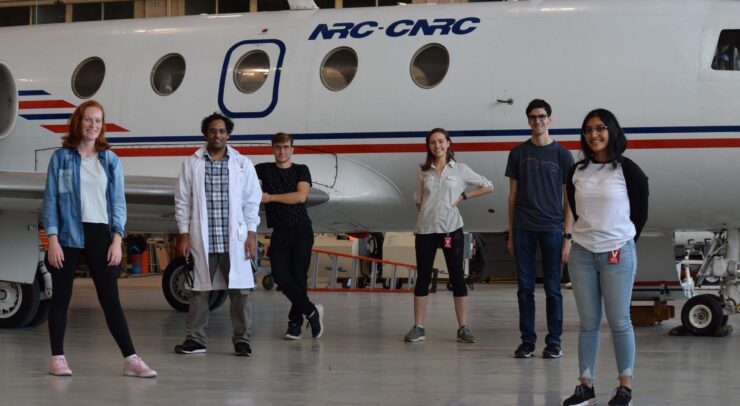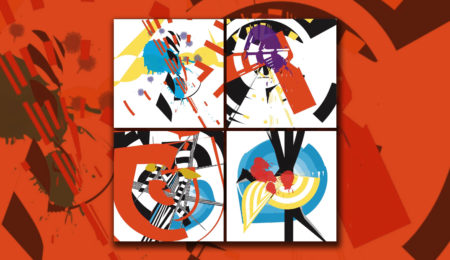TEAM’S MAIN GOAL IS TO STUDY REDUCED GRAVITY ENVIRONMENTS AND HOW THEY AFFECT ANTIBIOTIC RESISTANCE
On Aug. 16, 2021, the University of Ottawa’s Rocketry team participated in the Canadian reduced gravity experiment design challenge (CAN-RXG), Canada’s first microgravity research competition, in collaboration with the National Research Council (NRC) and the Canadian Space Agency (CSA). Throughout the competition, the uORocketry team demonstrated excellent design skills, communication, and enthusiasm, earning them the overall excellence award.
This two-year ongoing project is the result of a collaboration with McMaster University’s Brown Lab and uORocketry’s team, which consists of six members: Andrew Zavorotny (mission specialist, mechanical), Tamjeed Elahee (mission specialist, microbiology), Jillian Prins (microbiology), Magdalena Richardson (electrical hardware), Aashna Sharma (electrical hardware), and Jonathan Papineau (software).
In an interview with the Fulcrum, Prins, a fourth-year biotechnology student, and Magdalena Richardson, a fourth-year electrical engineering student, explained the project’s procedure.
“In summary, we have an array of identical E. coli samples that are getting subjected to various concentrations of antibiotic (gentamicin). We have several rows for control purposes. And we have our data points, a no-PMA control, and a section for samples ‘frozen’ right before the termination of the experiment and the ones taken during the microgravity parts of the flight. We flew between 10,000-20,000 ft for the parabola sequence. Each section of the samples gets ‘frozen’ at specific time points by actuating high-powered LEDs. We also monitored the acceleration, pressure, and temperature (keeping everything at 37 C) throughout the entire experiment.”
The main goal of the experiment is to study reduced-gravity environments and how they affect antibiotic resistance.
In terms of real-world application, Prins said that “as we do more long term space missions, it’s important to know how medicine reacts in different environments, if it becomes less effective or if it becomes more effective.”
Richardson added: “so all these things together. Designing PCBs, designing electrical systems, designing software environments, maintaining the biological component. I think there were a lot of components that, you know, for most of us, this is kind of the first time that we’re integrating all these things in a comprehensive and applicable way.”
Richardson described the micro-gravity flight aboard the Falcon 20 experienced by Andrew Zavorotny, a student in biomechanical engineering, and Tamjeed Elahee, a student in translational & molecular medicine, as amazing and wildly different for each of them.
She continued, “one of our experimenters was the person controlling it, they’re making sure that all the cues are gonna be hit properly, all the buttons properly, they’re making sure all the safety warnings are good. So he was really in it the whole time. I think his experience just felt like a weird airplane. And then our other bio experimenter was the one who didn’t have the hands-on part. So he was really allowed to experience gravity and wave pens in the air and have a fun time.”
The team attributed their top prize earning to the overall complexity of their design and their exceptional communication skills throughout the pandemic. After extensive planning, researching, designing, and reviewing, the uORocketry team has been successful in testing their experiment and continues to work towards producing a research paper in collaboration with the lab at McMaster.
Prins stated, “we had really great enthusiasm as a team, as stressful as it was and how little sleep we got, we still made it really fun and I think that was contagious.”
The rocketry team continues work on their current rocket ‘Rocktopus,’ which contains a student-researched and -designed hybrid engine. The team has plans to compete next summer at two competitions — spaceport America Cup and Launch Canada — with a goal of reaching 20,000ft.
A longtime dream for the rocketry founders and team has been to launch a rocket into low-Earth orbit (space). The first step in this process was to buy an engine. The team is now in their second stage which includes building their own hybrid engine. Eventually, once they are more comfortable with rocket design, they will move to bigger projects and engines to help them reach their goal.
To join the rocketry team and take part in their explosive work, you can find the team in the STEM building at the John McIntyre Team Space, located on the first floor.
For more information about U of O rocketry, visit their website here.





